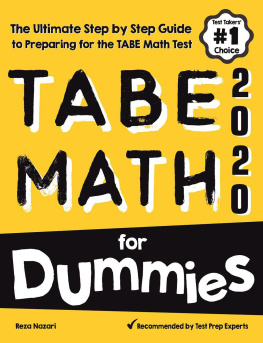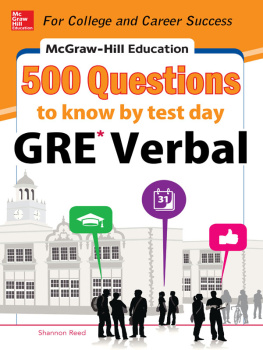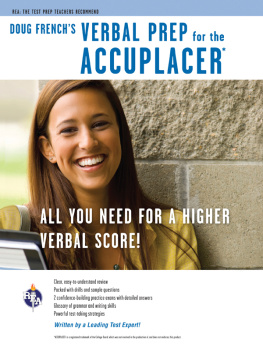 Copyright 2016 by McGraw-Hill Education. All rights reserved. Except as permitted under the United States Copyright Act of 1976, no part of this publication may be reproduced or distributed in any form or by any means, or stored in a database or retrieval system, without the prior written permission of the publisher. ISBN: 978-1-25-958799-3
Copyright 2016 by McGraw-Hill Education. All rights reserved. Except as permitted under the United States Copyright Act of 1976, no part of this publication may be reproduced or distributed in any form or by any means, or stored in a database or retrieval system, without the prior written permission of the publisher. ISBN: 978-1-25-958799-3
MHID: 1-25-958799-1 The material in this eBook also appears in the print version of this title: ISBN: 978-1-25-958786-3, MHID: 1-25-958786-X. eBook conversion by codeMantra
Version 1.0 All trademarks are trademarks of their respective owners. Rather than put a trademark symbol after every occurrence of a trademarked name, we use names in an editorial fashion only, and to the benefit of the trademark owner, with no intention of infringement of the trademark.
Where such designations appear in this book, they have been printed with initial caps. McGraw-Hill Education eBooks are available at special quantity discounts to use as premiums and sales promotions or for use in corporate training programs. To contact a representative, please visit the Contact Us page at www.mhprofessional.com. TERMS OF USE This is a copyrighted work and McGraw-Hill Education and its licensors reserve all rights in and to the work. Use of this work is subject to these terms. Except as permitted under the Copyright Act of 1976 and the right to store and retrieve one copy of the work, you may not decompile, disassemble, reverse engineer, reproduce, modify, create derivative works based upon, transmit, distribute, disseminate, sell, publish or sublicense the work or any part of it without McGraw-Hill Educations prior consent.
You may use the work for your own noncommercial and personal use; any other use of the work is strictly prohibited. Your right to use the work may be terminated if you fail to comply with these terms. THE WORK IS PROVIDED AS IS. McGRAW-HILL EDUCATION AND ITS LICENSORS MAKE NO GUARANTEES OR WARRANTIES AS TO THE ACCURACY, ADEQUACY OR COMPLETENESS OF OR RESULTS TO BE OBTAINED FROM USING THE WORK, INCLUDING ANY INFORMATION THAT CAN BE ACCESSED THROUGH THE WORK VIA HYPERLINK OR OTHERWISE, AND EXPRESSLY DISCLAIM ANY WARRANTY, EXPRESS OR IMPLIED, INCLUDING BUT NOT LIMITED TO IMPLIED WARRANTIES OF MERCHANTABILITY OR FITNESS FOR A PARTICULAR PURPOSE. McGraw-Hill Education and its licensors do not warrant or guarantee that the functions contained in the work will meet your requirements or that its operation will be uninterrupted or error free. Neither McGraw-Hill Education nor its licensors shall be liable to you or anyone else for any inaccuracy, error or omission, regardless of cause, in the work or for any damages resulting therefrom.
McGraw-Hill Education has no responsibility for the content of any information accessed through the work. Under no circumstances shall McGraw-Hill Education and/or its licensors be liable for any indirect, incidental, special, punitive, consequential or similar damages that result from the use of or inability to use the work, even if any of them has been advised of the possibility of such damages. This limitation of liability shall apply to any claim or cause whatsoever whether such claim or cause arises in contract, tort or otherwise.
CONTENTS
HOW TO USE THIS BOOK
The TABE (Tests of Adult Basic Education) tests cover basic skills that you use in your everyday life. You may be surprised to find that you know more than you think you do. You may also be surprised to discover skill gaps you did not know about.
Learning how to succeed in test-taking situations makes good career sense. You will be expected to take tests throughout your adult life, both on and off the job. Standardized tests are everywhere you look: drivers licenses, technical certification, educational placement, financial aid qualifying, job placement, and advancement exams. TABE: Level A Verbal Workbook is all about helping you target and master the skills you need to succeed, both on the TABE and in future situations as a lifelong learner.
Before You Begin
Before you begin to use this book, take some time to explore it. The book offers much more than question-and-answer material.
Read the Table of Contents. As you browse through the book, notice the following: Pretest beginning each section Skill building in every subject Study Tips Posttests All of these elements give you a process, or way of learning. In fact, because each section builds skills, you should read and do all the practices in order. What if you think you have great strength in one of the subjects? Take the Skills Assessment for that subject anyway. Even if your answers are almost all correct you should still review this section. Of course, be sure to take all of the posttests.
One section, Spelling, needs a special comment. You should not study this section straight through from first page to last. Correct spelling is best learned slowly and through repetition. Take the spelling pretest early in the process. If you find that spelling is not your strong subject, start the section. No matter what else you are working on, study a small part of the spelling section at the same time.
If you use the tips provided and study consistently, you can improve your spelling.
Use This Book as Your Personal Trainer
Step 1: Develop a fitness plan. Complete Section 1, Work Smarter, Not Harder. Step 2: Warm up. Target skills you need to strengthen. Take the pretest for each section before reading.
Step 3: Work out. Read instructions for each skill. Pace yourself through the practices. Take the posttest for each section. Go back to review when needed.  STUDY TIP: PRETESTS Do not study for the skills pretests that begin each subject section.
STUDY TIP: PRETESTS Do not study for the skills pretests that begin each subject section.
The results of each assessment will help you: Compare what you already know with what you need to know. Make a learning plan for choosing and using the lessons that follow. See your progress as you work through the practices and see how much you have learned by the time you complete the posttest.  STUDY TIP: POSTTESTS Set aside concentrated time to take each posttest. Treat them as though they were actual TABE tests. Your best indication of how much you learned will come from working through the posttests without distractions or interruptions.
STUDY TIP: POSTTESTS Set aside concentrated time to take each posttest. Treat them as though they were actual TABE tests. Your best indication of how much you learned will come from working through the posttests without distractions or interruptions.
This will help you learn which skills, if any, you need to go back and review. As you work through the book, it is useful to pace yourself through skill-building explanations and practices, allowing yourself to flip back to an explanation that will help you better understand the skill. However, the posttest will only be an accurate test of what you have learned and what areas need more study time if you work straight through, without looking back at explanations.
ABOUT THE AUTHORS
Phyllis Dutwin is President of Dutwin Associates, a company that consults with major publishers to develop books for adult students. Her Web address is http://PhyllisDutwin.com.
Linda Eve Diamond comes from a corporate training background and is the author of several business, educational, and self-help books.
Her Web address is http://LindaEveDiamond.com.
SECTION
Work Smarter, Not Harder
LESSON 1 Identify Your Target
Goal setting and timelines are important for your success. This chapter is a shortened version of Section 1 in the original TABE Level A book. If you completed this section in the original book, think about whether your goals or time frames have changed. You may want to fill it out again. If you did not consider these questions before now, take some time to complete this section.
Next page





 Copyright 2016 by McGraw-Hill Education. All rights reserved. Except as permitted under the United States Copyright Act of 1976, no part of this publication may be reproduced or distributed in any form or by any means, or stored in a database or retrieval system, without the prior written permission of the publisher. ISBN: 978-1-25-958799-3
Copyright 2016 by McGraw-Hill Education. All rights reserved. Except as permitted under the United States Copyright Act of 1976, no part of this publication may be reproduced or distributed in any form or by any means, or stored in a database or retrieval system, without the prior written permission of the publisher. ISBN: 978-1-25-958799-3 STUDY TIP: PRETESTS Do not study for the skills pretests that begin each subject section.
STUDY TIP: PRETESTS Do not study for the skills pretests that begin each subject section.